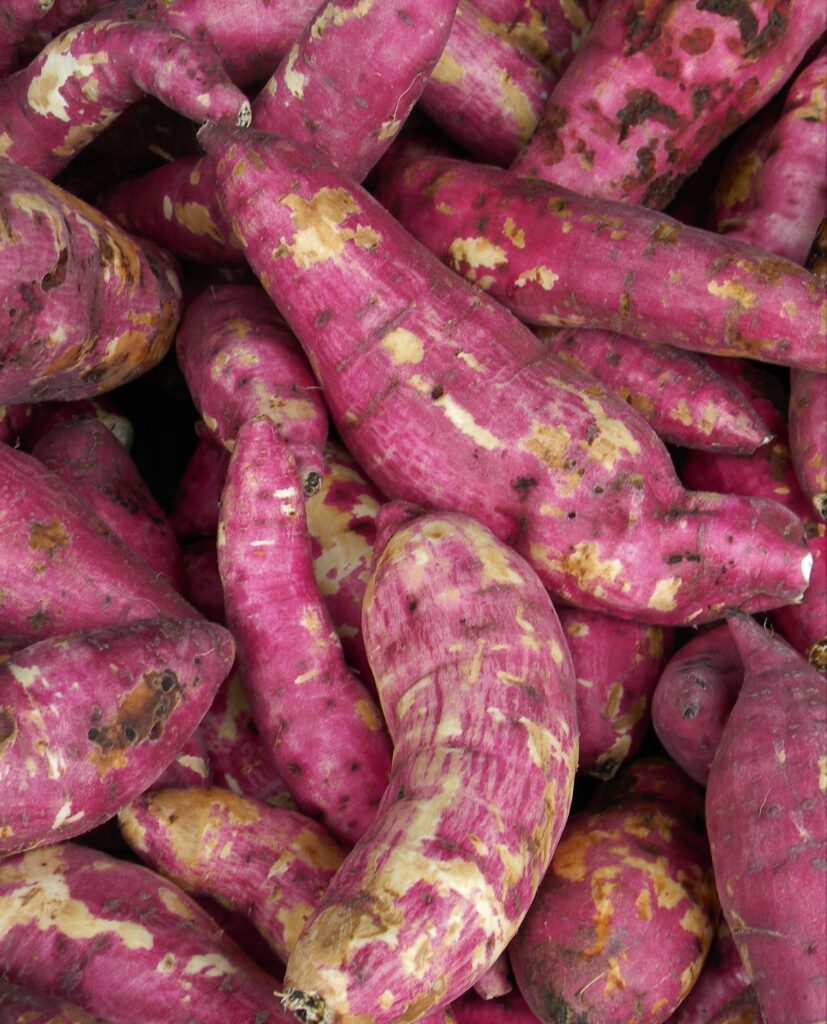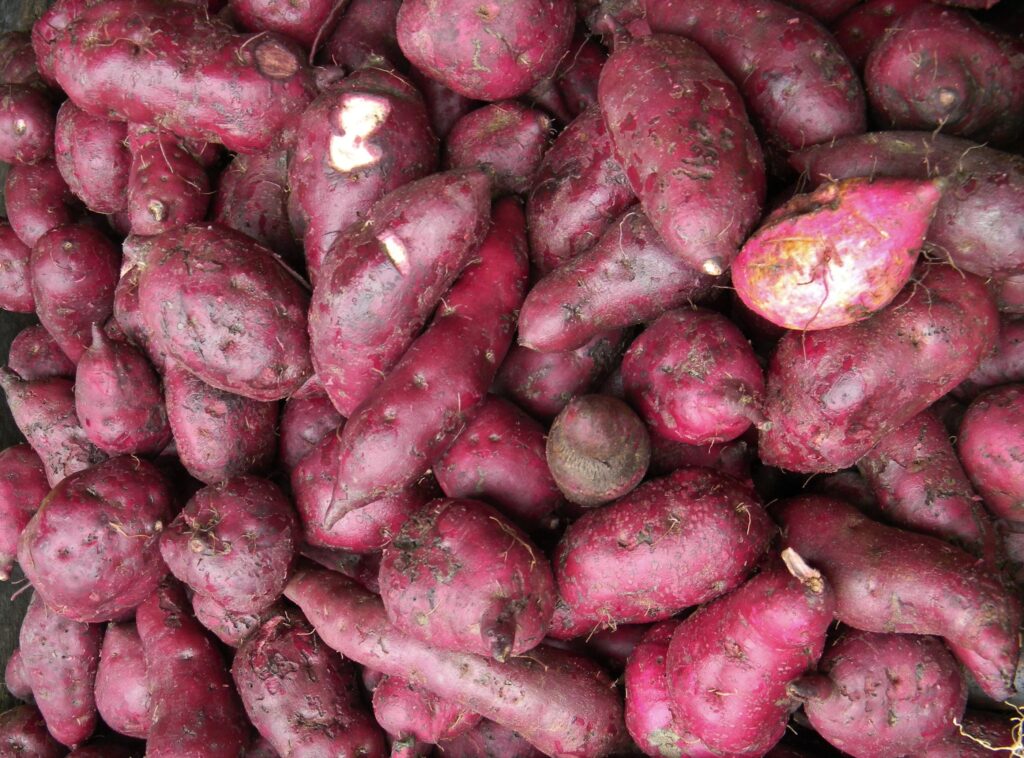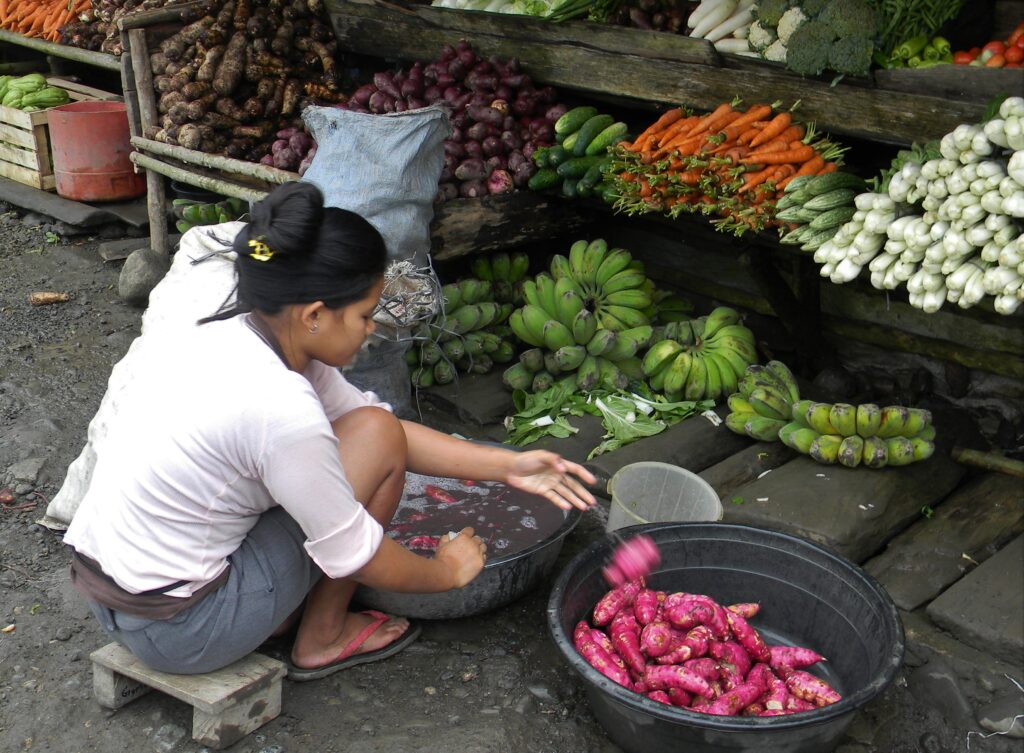Text and Photos by Henrylito D. Tacio
The most nutritious food of all vegetables – that is how the Washington, D.C.-based Center for Science in the Public Interest ranked sweet potato (known in the science world as Ipomoea batatas or locally called camote).
The North Atlantic Human Nutrition Research Center on Aging considered camote as one of the world’s healthiest foods. For one, it has the highest amounts of vitamin A among the root vegetables category. It is almost fat-free (0.39 grams).
According to the United State Department of Agriculture, for one medium size camote, you get 2.15 grams of protein, 31.56 grams of net carbs, 3.8 grams of dietary fiber, 28.6 milligrams of calcium, 16.9 milligrams of sodium, 265.2 milligrams of potassium, and 29.51 milligrams of vitamin C.
American nutritionists found that camote has “almost twice the recommended daily allowance of vitamin A, 42 percent of the recommendation for vitamin C, and four times the recommended daily allowance for beta carotene.”
A cup of cooked camote (about 200 grams) is better than broccoli and cabbage in vitamins A and C, iron, and calcium content. Because nutrients are anti-inflammatory, they help reduce the severity of asthma, osteoarthritis, and rheumatoid arthritis.

Red sweet potato 
Camote 
Cleaning sweet potato
Having high dietary fiber and low-fat content, camote is suitable for people with diabetes because it helps stabilize blood sugar levels and lowers insulin resistance. Among the root vegetables, camote has the lowest glycemic index. As such, it causes only a small rise in blood glucose levels.
The roots are not the only edible part of camote but also the leaves and tops. Nutritionists claim the leaves and tops contain high amounts of antioxidants, vitamins, minerals, and dietary fiber.
In his monthly column, “Straight From the Farm,” Dr. Rafael D. Guerrero III, wrote: “In a study conducted by Chung-Yen Chen and associates of Tufts University in the United States, it was found that the purple leaves of sweet potato contained six grams of total phenolics and 21.5 grams of beta carotene per 100 grams.
“In another study by nutritionist Richard Baybutt of Kansas State University , it was reported that smokers exposed to benzoapyrene, a cancer-producing chemical in cigarettes, were deficient in vitamin A that contributed to lung inflammation and emphysema. Thus, the consumption of foods high in vitamin like camote is recommended to correct such deficiency.”
The local term camote comes from the Spanish word for sweet potato. In the Caribbean, it is known as baniato, while people in New Zealand and Fiji called it kamaru. Batate douce is how French people called it.
Camote is the main staple in the highlands of Papua New Guinea. In Japan, it ranks next to rice as a staple food. Repeatedly, in the history of Japan, camote has prevented widespread starvation during years of rice crop failure.
No wonder camote has earned the moniker survival crop. “During good times, sweet potato is ignored or even looked down upon; during bad times, it saves a lot of people from starvation,” one author pointed out. “The sweet potato plant can withstand rough weather as much as it can withstand poor soils.”
Camote is generally considered to have originated from tropical America. It was brought to the Philippines by the early Spanish conquestadores. Today, camote is grown all over the country.
In some parts of the country, particularly Batanes and Mountain Province, camote is a part of the daily diet. It is commonly boiled, baked, fried, or mixed with other root crops to form guinatan, a Filipino delicacy. It is also processed in sweetened or candied form. The tops are eaten boiled when young or used as feed for animals when mature.
In Malaysia, fresh sweet potatoes are bought to be eaten boiled, steamed, or fried, and to prepare some traditional Malaysian cakes and teatime favorites. Young tender shoots are used as green vegetables in local cuisine, cooked in much the same way as kangkong.
Still in Malaysia, sweet potato is also used in processing: mainly as a thickener in the manufacture of tomato and chili sauces and in baby foods and in such snack foods as kerepek (crisps) and cakar ayam (sugared and fried strips).
Now, some words of warning. “Sweet potato contains measurable amounts of oxalates that can crystallize in body fluids and cause health problems,” informs Arlene May G. Corpus, a therapeutic dietitian at the Manila Adventist Medical Center. “If you have existing and untreated kidney or gallbladder problems, you may want to avoid eating sweet potatoes.”
Unknowingly, camote can be made into a pie. Here’s a recipe prepared by Carina Guevara. The total cooking time is 40 minutes. Good for six to eight persons. It may be served with vanilla ice cream or whipped cream.
You need the following: one-kilo camote, one-half cup butter, one-and-a-half cups sugar, and one can evaporated milk, one teaspoon vanilla, one-and-a-half teaspoons nutmeg, one prepared unbaked 9-inch pie shell and a dash of cinnamon.
If you have all the ingredients, here’s how to do it. Preheat the oven to 400°F. Boil the camote, skin on, until a fork or butter knife inserted causes the camote to break apart easily. Cool camote slightly. Then place in a colander and run in cold water to make peeling easier.
In a mixer, beat camote on medium speed, stopping frequently to remove strings from the beaters. Once the strings are removed, add butter and continue to mix. Then add sugar, milk, vanilla, and nutmeg. Adjust the nutmeg and sugar to your taste. Continue mixing until the batter has a nice, smooth consistency. The batter should not be thin or runny, or too thick. If it’s too thick, add a little more evaporated milk (by the tablespoon) until the batter is smooth.
Pour the batter into the unbaked pie shell, sprinkle a dash of cinnamon on top, and bake for 30 minutes.

